Payment Debate: Plastic vs Paper Cards Cost Analysis
Table of Contents []
- Plastic Vs Paper Cards Cost
- Understanding the Basics of Plastic Cards
- The Appeal of Paper Cards
- Comparing Lifespan and Maintenance
- Security Features and Technology Integration
- Design and Brand Representation
- Accessibility and Inclusivity
- Choosing the Right Material for Your Needs
- Contact Plastic Card ID for Your Card Needs
Plastic Vs Paper Cards Cost
Choosing the Right Material for Your Cards: Insights on Plastic vs. PaperWhen it comes to selecting material for cards, whether for business or personal use, the debate between plastic and paper is ongoing. Both have their advantages and drawbacks, and understanding these can help clients make informed choices. Let's explore the characteristics of each material to determine which might be the better option for your needs.
Understanding the Basics of Plastic Cards
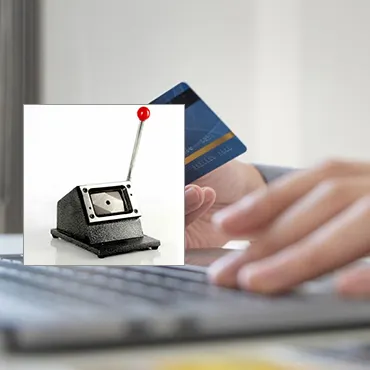
The popularity of plastic cards is undeniable. From credit cards to membership cards, they have become a staple in our wallets due to their durability and functionality. Plastic cards are typically made from PVC (polyvinyl chloride), which can withstand wear and tear, and are less likely to get damaged in the wash or crumple in your pocket. Moreover, they offer a high-quality print finish, making them an excellent choice for detailed designs and branding.
The Durability of Plastic Cards
One of the most significant advantages of plastic cards is their resilience. These cards can last for years without showing signs of aging, which is particularly beneficial for cards that are used frequently or carried daily. The material's sturdiness ensures that the card stays intact and maintains a professional appearance over time.
Another aspect of plastic cards' durability is their resistance to the elements. They are water-resistant, an essential feature for outdoor events or environments where they might be exposed to moisture. This attribute helps maintain the integrity of the card's information and design.
Customization Options for Plastic
Customization is where plastic cards truly shine. They offer a range of options, from embossing to the inclusion of smart chips and magnetic stripes. These features not only make the card functional for various purposes but also allow for a high degree of personalization.
When it comes to design and aesthetics, plastic cards provide a smooth, sleek surface suitable for high-resolution images and crisp typography. Businesses can utilize these features to align with their branding and create a visually compelling card that stands out.
Environmental Impact of Plastic
The environmental footprint of plastic cards is an aspect that warrants careful consideration. Although durable, PVC is not biodegradable, and its production and disposal contribute to environmental concerns. Clients who prioritize sustainability might view this as a disadvantage.
However, it's worth noting that there are some eco-friendlier options, such as bioplastics or recycling programs, that can mitigate the environmental impact. As our awareness and technology progress, these alternatives are becoming more accessible and effective.
Cost-Effectiveness of Plastic Cards
- While the initial investment in plastic cards may be higher than paper, their longevity means a lower replacement rate, which can be cost-effective in the long run.
- Bulk ordering options can also reduce the cost per card, making it a viable solution for larger-scale needs.
- The ability to incorporate technology, like RFID or NFC, might bear additional costs but can add considerable value for certain functionalities.
The Appeal of Paper Cards
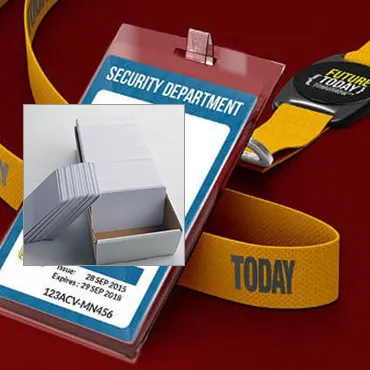
Paper cards offer a distinct feel and aesthetic that can be appealing for various applications. They are often chosen for special occasions or when a temporary card suffices. An attractive feature of paper is its tactile quality; it offers a natural, warm touch that plastic does not. There's also a certain nostalgia with paper materials that harks back to traditional methods of communication and branding.
Eco-Friendly Nature of Paper Cards
The environmental aspect of paper cards is one of their most celebrated qualities. Paper, being a renewable resource and often recyclable, has a much smaller carbon footprint compared to plastic. For companies looking to emphasize their commitment to sustainability, paper can broadcast that message effectively.
Not only does paper disintegrate over time, leaving less waste, but it can also come from certified sustainable sources, further lessening its ecological impact. Companies making green choices can highlight their environmental stewardship and appeal to like-minded consumers.
Cost Considerations for Paper Cards
Initially, paper cards might seem like the cost-effective champion, especially for small quantities or one-time events. They generally command lower production costs and can be printed swiftly, which is excellent for tight deadlines or limited budgets.
Yet, when weighing long-term usage, paper cards may require frequent replacement due to wear and tear, which can add up in costs. The decision between short-term savings and long-term investment is something businesses must ponder.
Customizability and Print Quality on Paper
Despite its more fragile nature, paper is still a strong contender when it comes to print quality and customizability. It provides an excellent surface for rich colors and detailed graphics. Paper cards are perfect for vibrant designs, artistic illustrations, and intricate patterns.
Digital printing advancements have also enhanced the quality and array of finishes available for paper cards, from matte to glossy, adding to their versatility.
Usability and Functionality of Paper Cards
- For temporary needs, such as event passes or discount coupons, paper cards are practical and straightforward.
- They are often easier to write on, making them suitable for personal notes or additional information.
- Though not as tech-forward as plastic, paper cards can still incorporate features like QR codes for a tech touch without the additional costs of embedding chips.
Comparing Lifespan and Maintenance
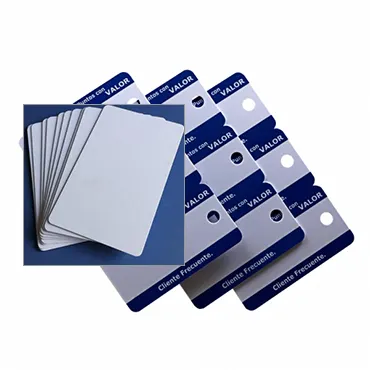
When comparing the lifespan of plastic and paper cards, plastic generally takes the lead with its robustness and ability to withstand extreme conditions. On the other hand, paper cards should be treated with more care, protecting them from moisture, tears, and bends to preserve their integrity.
Longevity of Plastic
It's clear that plastic cards offer impressive longevity. Their expected lifespan can be several years depending on their use, which is essential for ID cards, loyalty programs, and other long-term functionalities. This reduces the need for frequent replacements, thus saving money and resources in the long run.
A minor drawback is that plastic cards can eventually suffer from surface scratches and may discolor over time, especially if they are swiped often or exposed to UV light. Yet even with these considerations, plastic remains robust over time.
Paper Cards: A Short-Lived Choice?
Paper cards, while often seen as a short-lived solution, can still last reasonably well under the right conditions. They are ideal for single-use or limited-duration purposes, where the need for extended durability isn't paramount.
However, acknowledging the fragile nature of paper is important for clients who may require more from their cards. Careful handling and storage can extend their usability, but this might not be practical in every scenario.
Maintenance and Care
Maintaining the aesthetic and functional integrity of your card, whether plastic or paper, is key to its effectiveness. Plastic cards can be wiped clean if they become dirty, a feature that's not possible with paper, which absorbs liquids and stains.
For paper cards, protecting them in a wallet or cardholder can help prevent damage and extend their life. Both types can also be affected by direct sunlight or heat exposure, which might be a consideration depending on how the cards will be used or stored.
Replacement and Disposal
- Plastic cards, when retired, often end up in landfill sites unless recycled correctly. Recycling programs for PVC are not as widespread as for paper, making disposability a concern.
- Paper cards can often be easily recycled or composted, offering a greener option at the end of their lifecycle.
- Replacement frequency depends on the application and can significantly impact total costs. Frequent replacement needs might negate the lower upfront costs of paper cards and vice versa for plastic.
Security Features and Technology Integration
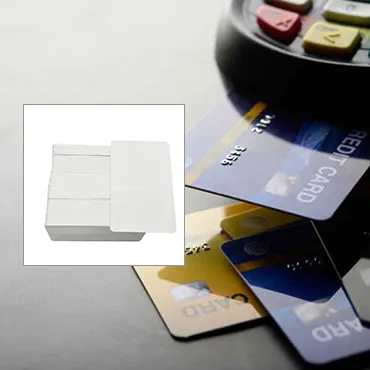
In an increasingly digital world, the need for security and tech integration in cards cannot be overlooked. Plastic cards, with their capability to embed chips and magnetic stripes, offer enhanced security features that are crucial for sensitive applications.
Technology-Enabled Plastic Cards
Plastic cards have long been the standard for banking and access control because of their capacity to integrate technology. EMV chips, NFC, and RFID are just a few examples of how plastic cards can be enhanced to serve complex, secure transactions and identity verification.
This tech integration isn't only about security; it can also provide seamless user experiences, such as contactless payments or entry systems, making plastic cards a high-tech choice.
Limited Tech on Paper Cards
While paper may lack the ability to host smart chips, it can still accommodate other tech features like QR codes or barcodes. These can offer some degree of interactivity and functionality, such as web links or scannable discounts, without the need for embedded technology.
Although these features might not provide the same level of security or sophistication, they can be sufficient for certain applications and offer a touch of modernity to a classic material.
Security Considerations
Plastic cards' security features make them an obvious choice for applications where information must be protected. Holograms, watermarks, and customized security printing can safeguard against counterfeiting and unauthorized use.
Paper cards, given their nature, are more vulnerable to forgery and damage. They can be reinforced with security inks and features, but these might not be as robust as the options available for plastic cards.
Functionality vs. Cost
- Ultimately, choosing between plastic and paper for tech and security features will come down to the required functionality versus cost.
- For high-security needs or advanced tech functions, plastic is the clear winner, despite a higher cost.
- For less rigorous needs, paper with basic tech integrations can be an affordable compromise.
Design and Brand Representation
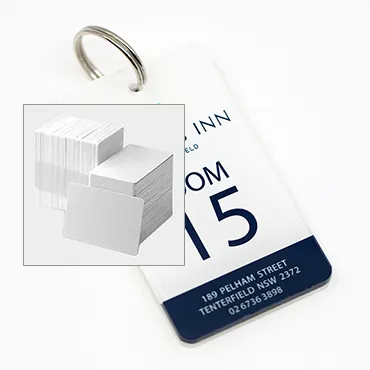
The choice between plastic and paper also extends to aesthetics and branding. The material you choose for your cards is a reflection of your brand and can convey different messages to your target audience.
High-End Look and Feel of Plastic
Plastic cards are synonymous with a high-end look and feel. They can be designed with vibrant colors, crisp graphics, and a range of textures. Their professional finish sends a message of quality and durability, and they align well with brands that want to convey a sense of sophistication and permanence.
Features like transparency, metallic foils, and raised print can give plastic cards a unique and memorable touch that stands out in the marketplace.
Paper's Natural and Traditional Appeal
Conversely, paper cards have a natural and traditional appeal that can resonate with audiences looking for authenticity and environmental consciousness. A beautifully designed paper card, with a tactile finish and artisanal quality, can make a strong impression that aligns with a more organic or handcrafted brand ethos.
Using recycled paper or unique textures can add to the narrative of a brand that prioritizes environmental responsibility and craftsmanship.
Design Flexibility
Both materials offer design flexibility; however, the choice may hinge on the brand image you wish to project. Sharp, modern designs may be suited to plastic's sleek surface, while rustic or eco-conscious designs might find a better home on paper.
Additionally, innovations in printing technology have broadened the range of effects and finishes available for both materials, allowing for a greater expression of brand identity.
Color and Graphic Representation
- Color reproduction is excellent on both materials, but plastic tends to lend itself to more vibrant and lasting color quality due to its non-porous surface.
- Paper cards can offer a softer, more muted color palette that complements certain design aesthetics and can be appealing for artistic or vintage-style branding.
- Graphic representation is sharp and clear on plastic, ideal for logos and branding elements that require precision and impact.
Accessibility and Inclusivity

In our mission to cater to everyone nationally, we understand that accessibility and inclusivity are critical when choosing the material for your cards. Let's look at how plastic and paper can be tailored to meet a wide range of needs.
Inclusive Design on Plastic Cards
Plastic cards can be fashioned with features like Braille, large print, or distinct textures to make them accessible to people with visual or tactile impairments. Their robustness also ensures that these features last without wearing down easily.
Additionally, the technology embedded in plastic cards can suitably assist individuals with special requirements, for example, by offering touchless access or payment options.
Ease of Handling with Paper Cards
Paper cards are lightweight and often easier to handle for individuals who might have difficulties with stiffer materials. Their ease of use makes them a decent choice for many people, including those with limited dexterity.
The ability to add personalized touches, such as textures or unique cuts, can enhance the user experience for all, creating a sense of inclusivity.
Universal Designs On Both Materials
Whether plastic or paper, the goal is to create cards that everyone can use effectively. Universal design principles can be applied to both materials to ensure that they are intuitive and user-friendly for the widest possible audience.
Considerations like readability, color contrast, and simplicity in design contribute to cards that are not only beautiful but also functional for all clients, irrespective of their abilities.
Customization to Suit Various Needs
- Customization allows for the creation of cards that meet specific individual needs, making them as inclusive as possible.
- From size and shape to orientation and information layout, both plastic and paper cards can be tailored to enhance accessibility.
- Our commitment to serve everyone nationwide means we strive to accommodate a diverse clientele, supporting inclusivity in every aspect of our card production.
Choosing the Right Material for Your Needs
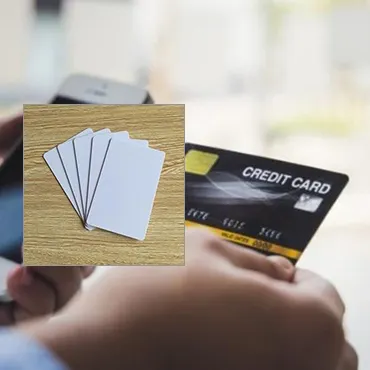
Deciding between plastic and paper cards should be informed by the specific needs and values of your business or personal use. Consider factors such as lifespan, cost, design, technology, and environmental impact when making your selection.
Lifespan and Reusability Considerations
If you're looking for longevity and reusability, plastic cards are likely the more appropriate choice. They resist damage and can serve their purpose for years, making them ideal for continual use. This is cost-effective in the long term and ensures consistent branding and user experience.
However, if your needs are transient, such as event passes or short-term promotions, paper cards might serve you well, offering convenience and simplicity.
Cost vs. Value
It's important to balance cost against the value provided by each type of card. Plastic cards, while initially more expensive, may offer greater functionality and security that could be worth the investment. On the other hand, paper cards, with their lower upfront costs, might be the smart choice for limited use scenarios.
Always consider the bigger picture: the total cost of ownership, including replacement and disposal, should influence your decision.
Brand Alignment and Message
Your choice should also reflect your brand's message. A luxuriously crafted plastic card can elevate your brand's perception, whereas an eco-friendly paper card can highlight your commitment to the environment.
The material you select tells a story about your values and priorities, so choose one that aligns with the narrative you wish to convey to your clients or users.
Customizability and User Experience
- Both plastic and paper cards can be customized to suit your specific needs and enhance user experience.
- Think about the flexibility of design, the need for technology integration, and the importance of accessibility in your cards.
- Your choice should make your clients' interaction with your card as seamless and enjoyable as possible.
Contact Plastic Card ID for Your Card Needs
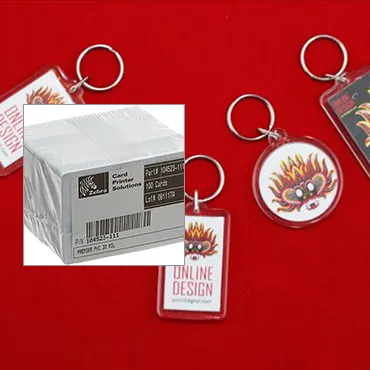
Whether you're leaning towards plastic or paper cards, Plastic Card ID is here to guide you through the process. Our expertise and nationwide service ensure we can meet your needs with high-quality products tailored to your specifications. Don't hesitate to reach out to us for new orders or questions at 800.835.7919 - we are ready to help you make the perfect choice.
Ordering Made Easy
Placing an order with us is straightforward and hassle-free. Our team is committed to providing exceptional customer service, ensuring your experience is smooth from start to finish.
With our nationwide service, we are equipped to handle orders of any size and scope. Trust us to deliver cards that meet your criteria and exceed your expectations.
Consultation and Design Assistance
We understand that choosing the right material for your cards is just the beginning. Our team can assist you with the design process, offering insights and creative solutions that resonate with your brand and purpose.
Our expertise will help you navigate the options available, ensuring a finished product that you can be proud of, no matter the material you choose.
Quick and Reliable Delivery
Once your order is finalized, you can count on Plastic Card ID to deliver promptly. We value your time, and our efficient production and delivery systems ensure that you receive your cards exactly when you need them.
In a world where timing can be everything, let us be the partner that keeps you ahead of the game.
Reach Out to Us Today
If you're ready to explore the possibilities or need assistance deciding between plastic and paper cards, our team at Plastic Card ID is eager to support you. Give us a call at 800.835.7919 for personalized service that caters to your unique needs. Together, we'll find the right card solution that suits your objectives and leaves a lasting impression.
Remember, whether you opt for the durability of plastic or the natural charm of paper, your card is a representation of who you are and what you stand for. Make it count with the help of Plastic Card ID .
Previous Page

